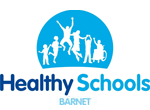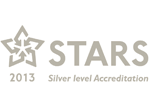Personal, Social, Health and Economic (PSHE)
Intent
Although teaching the entire scope of PSHE is not a statutory requirement for Primary Schools in England, the subject makes a vital contribution to areas where schools do have a duty. For example, the Education Act (2002) requires that we provide our children with a broad and balanced curriculum that “meets the needs of all pupils”. We know that Spiritual, Moral, Social and Cultural Education (SMSC) must be promoted (and is an Ofsted focus) and that we have a duty of care to keep our pupils safe.
“High quality, evidence-based and age-appropriate teaching of these subjects can help prepare pupils for the opportunities, responsibilities and experiences of adult life. They can also enable schools to promote the spiritual, moral, social, cultural, mental and physical development of pupils, at school and in society.” Department for Education (DfE)
So in order to answer this question, schools must be clear on the understanding of Jigsaw PSHE’s place in the curriculum and its contribution to the school as a whole, particularly the whole school ethos, safeguarding and the contribution to SMSC. You may already have clear goals and ideas about this, or it may be that you need to create something which firmly anchors PSHE within the goals and ethos of your school community. For example, you may take your school values and connect these with the themes within Jigsaw PSHE and the Puzzle Titles (Being Me in My World, Celebrating Difference, Dreams and Goals, Healthy Me, Relationships and Changing Me). This could be promoted and celebrated within the assemblies which launch each Puzzle each half term. British Values and SMSC are mapped throughout Jigsaw, so if any of these are similar to your schools’ (e.g. working together would fit with “Relationships”) then that will be easy to evidence. SMSC opportunities are identified throughout Jigsaw PSHE.
It is not only the leadership which needs to articulate this vision of intent however, the staff and pupils should also be clear about the contribution of PSHE to their development. It may be worth holding a staff meeting and asking the question, “What does PSHE give to our children? Why are we teaching it?” and creating a statement of intent that all staff agree on which can then be shared and embedded with the children.
The Department for Education (DfE) has stated:
“Personal, social, health and economic (PSHE) education is an important and necessary part of all pupils’ education. All schools should teach PSHE, drawing on good practice, and this expectation is outlined in the introduction to the proposed new national curriculum.”
The PSHE Association states
“PSHE education gives pupils the knowledge, skills, and attributes they need to keep themselves healthy and safe and to prepare them for life and work in modern Britain…. When taught well, PSHE education helps pupils to achieve their academic potential, and leave school equipped with skills they will need throughout later life.”
On our website, our intent for Jigsaw is clearly stated:
“Jigsaw holds children at its heart, and its cohesive vision helps children understand and value how they fit into and contribute to the world.
With strong emphasis on emotional literacy, building resilience and nurturing mental and physical health, Jigsaw 3-11 properly equips schools to deliver engaging and relevant PSHE within a whole-school approach. Jigsaw lessons also include mindfulness allowing children to advance their emotional awareness, concentration and focus.”
Schools using Jigsaw PSHE are free to cite this as they have adopted the scheme of work or use these phrases as a basis to determine their own statement of intent which can then be shared by staff and pupils.
Implementation (How is this being taught in the classroom?)
Although the intent stated by the senior leaders is important, Ofsted will want to ensure that this is embedded throughout the school.
“It is essential that the primary focus of inspection is on the education that pupils are actually receiving day-by-day in classes, rather than simply being about the ambitions or intentions of senior leaders.” (Ofsted, 2019)
So it is necessary for the intent for PSHE to be clearly shown in the implementation of PSHE in your school and there must be quality provision for PSHE matching that stated intent.
Implementation needs to ensure depth, accurate subject knowledge, detailed planning and building on prior learning.
Jigsaw 3-11 offers a comprehensive Programme for Primary PSHE including statutory Relationships and Health Education, in a spiral, progressive and fully planned scheme of work, giving children relevant learning experiences to help them navigate their world and to develop positive relationships with themselves and others.
Jigsaw consists of six half-term units of work (Puzzles), each containing six lessons (Pieces) covering each academic year.
- Term 1: Being Me in My World
- Term 2: Celebrating Difference (including anti-bullying)
- Term 3: Dreams and Goals
- Term 4: Healthy Me
- Term 5: Relationships
- Term 6: Changing Me (including Sex Education)
Every Piece has two Learning Intentions, one specific to Relationships and Health Education (PSHE) (in purple) and the other designed to develop emotional literacy and social skills (in green).
Puzzles are launched with a whole-school assembly containing an original song, with each year group studying the same unit at the same time (at their own level), building sequentially through the school year, facilitating whole-school learning themes.
The various teaching and learning activities are engaging and mindful of different learning styles and the need for differentiation and the Early Years (EYFS) planning is aligned to the National Early Years Framework (England).
Each lesson is built upon a Charter which underpins the behaviour and respect that is the basis for each lesson (one is provided within Jigsaw, but children and their teacher can write their own to ensure mutual respect and ownership).
The lessons then split into 6 parts, all of which should be included in every session to ensure that the learning follows the optimum progression.
Connect us – This is a game or activity designed to be fun and inclusive and to build and maximise social skills. ‘Connect us’ engenders positive relationships and enhances collaborative learning. It sets the atmosphere at the beginning of each Jigsaw Piece and can be used again at the end should the teacher feel the atmosphere needs to be lifted after some deep work during the lesson.
Calm me – This section of the Piece helps children gain awareness of the activity in their minds, relaxing them and quietening their thoughts and emotions to a place of optimum learning capacity. This will also engender a peaceful atmosphere within the classroom. It is an invaluable life skill which also enhances reflection and spiritual development. This underpins the mindful approach advocated in Jigsaw
Open my mind – The Reticular Activating System of the brain filters the many stimuli entering the child’s mind at any given time. It is designed only to allow in that which is significant. Therefore, it is important to engage this system with the most important aspects of learning intended for each Piece (lesson). If we do this well, it will enable children to filter out activity around them not significant to this learning intention, thereby improving concentration and learning.
Tell me or show me – This section of the Piece (lesson) is used to introduce new information, concepts and skills, using a range of teaching approaches and activities.
Let me learn – Following Piaget’s learning model, after receiving new information/concepts, children need to manipulate, use, and play with that new information in order for it to make sense to them and for them to ‘accommodate’ it into their existing learning.
Help me reflect -Throughout Jigsaw, children are encouraged to reflect on their learning experiences and their progress. By reflecting, children can process and evaluate what they have learnt, which enables them to consolidate and apply their learning. They are also asked to stop and become aware of their thoughts and feelings in any given moment in Pause Points (brief pauses within the lesson where the children can have a couple of moments to just stop and be to consider whether what they are learning may be particularly meaningful to them).
Closure – Each Piece needs safe closure. This will always include the teacher praising the children for their effort, positive attitude and achievement, as well as giving one or two sentences to summarise the key learning points for the children.
In addition to this, teachers have the freedom to plan with detail and attention to their individual children. Learners can be scaffolded, and any individual needs can be supported where necessary. The summative assessment process offers criteria for children either working at, beyond or towards the age-related expectations. Greater depth children can be challenged to ensure that they are being given the opportunities to enrich their learning further. The “Class Teacher” page at the start of every puzzle allows time for practitioners to consider the upcoming content. These support teachers to feel more confident in their own subject knowledge, which in turn allows them to extend the learning of the children.
Schools should also invest in good CPD for teachers for whom PSHE is not a specialist subject, especially in areas of sensitivity such as the new statutory areas of health and relationships education (with which Jigsaw PSHE is fully compliant) and sex education if the school is following this in Jigsaw. As well as the on-line support detailed above, Jigsaw PSHE supports schools with a designated mentor and can also provide training for school staff and subject leaders.
Impact (What is the effect?)
“The positive results of pupils’ learning can then be seen in the standards they achieve.” Ofsted, 2019
The key elements of this for schools are
- knowing and being able to evidence the impact of the PSHE curriculum both on learners individually and in the school as a whole
- coherently being able to match and evidence the impact of PSHE with the intent
So how can we achieve this?
In order to be confident in the impact of PSHE, senior leaders and/or the PSHE leader need to be able to monitor the subject effectively using scrutiny and moderation of outcomes (see the “Teachers” tab on the Jigsaw PSHE Community Area for support and ideas with this). They also need the time to carry out discussions with pupils as this is something that inspectors will definitely do and is the only way of knowing exactly what the children feel is the impact on them of their learning. It is also worth ensuring that colleagues’ views are taken into account. This can ensure that impact matches intent across the whole school community.
Assessment is a major contributor in evidencing the impact and this needs to be tracked to ensure that pupils are building on their skills and knowledge over time. It can then show progression and also uniformity between parallel classes ensuring that in-school gaps or anomalies are dealt with especially issues with teacher confidence.
In the document “Relationships Education, Relationships and Sex Education (RSE) and Health Education: Statutory guidance for governing bodies, proprietors, head teachers, principals, senior leadership teams, teachers” 2019, the DfE states that:
“Schools should have the same high expectations of the quality of pupils’ work in these subjects as for other curriculum areas. A strong curriculum will build on the knowledge pupils have previously acquired, including in other subjects, with regular feedback provided on pupil progress.
Lessons should be planned to ensure that pupils of differing abilities, including the most able, are suitably challenged. Teaching should be assessed and assessments used to identify where pupils need extra support or intervention.
Whilst there is no formal examined assessment for these subjects, there are some areas to consider in strengthening quality of provision, and which demonstrate how teachers can assess outcomes. For example, tests, written assignments or self-evaluations, to capture progress.”
Assessment in Jigsaw is both formative and summative. The two clear learning objectives for each lesson (piece) allow the teacher to be mindful of the assessment elements within that session that can formatively help them pitch and plan subsequent lessons, and activities are included in each lesson to give the children the opportunity to self-assess using simple pictorial resources designed in a child-friendly, age appropriate manner. It also allows children of 6 and over the opportunity to identify areas for self-improvement.
To support the teacher in tracking each child, there is a ‘Summative Assessment: tracking pupil progress’ sheet that can be used. This sheet has three attainment descriptors for each Puzzle. The teacher can then use a ‘best-fit’ approach to decide whether the child is working towards, working at or working beyond for that Puzzle, highlighting one green and one purple descriptor. The green descriptors will also flag up children who may need more support with emotional literacy or social skills development and they can be signposted to the setting’s pastoral support systems as appropriate. In Piece (lesson) 6 there are also exemplifications to aid teacher judgement for the ‘working towards’ / ‘working at’ / ‘working beyond’ attainment descriptors.







